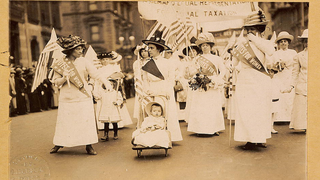Introduction

Central Question: How did the social and economic conditions of the Gilded Age contribute to the Progressive era?
Though the Gilded AgeTime period in American history from 1870-1900 brought much glamour and glory to American cities, it was also a period of great struggle and pain for many. A look at the underside of city life revealed countless Americans and immigrants living in squalor with open sewage in dark, cramped conditions. Factories, with all of their prosperity and stature, were full of hazardous conditions and little job security. Over time, this "muck" was discovered by a group of "muck"raking journalistsReform minded journalists of the Progressive Era who probed under the surface to reveal a life of contrast. Photos by Jacob Riis, exposés by Ida Tarbell, and published works by Upton Sinclair revealed how the other half of society lived. Collectively, these stories and figures helped to inspire a new age in America, the Progressive EraPeriod of reform in the US from 1890s-1920, that sought to expand the opportunities of the Gilded Age to all that lived within the nation's borders.
Following successful completion of this lesson, students will be able to:
- Identify the origins of the Progressive Movement.
- Describe the impact muckrakers had in shaping public opinion during the Progressive Era.
- Describe the contributions of noteworthy Progressive leaders, such as Ida Tarbell and Theodore Roosevelt.
- Identify the major governmental reforms and legislative actions that contributed to the Progressive Movement.
The above objectives correspond with the Alabama Course of Study: US History 11 Objectives: 2, 2.2, & 2.6.
This lesson incorporates the following Literacy Standards: R2, R7, W2, W4, W5, W6 & W7.
Photograph Citation:
Suffrage Parade in NY PBS Learning Media. Web. 21 March 2014. <http://aptv.pbslearningmedia.org/resource/feea9286-3407-4aed-aa81-9e78ee05065e/feea9286-3407-4aed-aa81-9e78ee05065e/>.